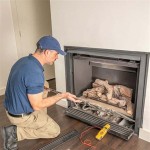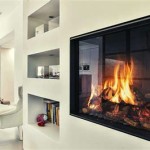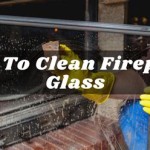Electric Fireplace Wood: Aesthetics, Efficiency, and Considerations
Electric fireplaces have become a popular alternative to traditional wood-burning fireplaces, offering a cleaner, more convenient, and often more cost-effective heating solution. One area where manufacturers have focused significant attention is replicating the visual appeal of a wood fire. Electric fireplace wood, whether incorporated as logs or other decorative features, plays a crucial role in achieving this realistic look. This article explores the various aspects of electric fireplace wood, examining its types, aesthetic considerations, efficiency impacts, and factors to consider when choosing an electric fireplace with wood elements.
The visual appeal of a fireplace often stems from the presence of burning wood. The flickering flames dancing around logs create a sense of warmth, comfort, and ambiance. Electric fireplaces aim to capture this essence without the drawbacks of real wood, such as smoke, ash, and the need for constant tending. The success of an electric fireplace largely depends on how well it mimics the look of a real wood fire, and the wood components are essential to this imitation.
Types of Electric Fireplace Wood
The "wood" found in electric fireplaces is not actual wood, but rather carefully crafted replicas made from various materials designed to withstand the heat and provide a realistic appearance. Understanding these materials is crucial to appreciating the nuances of different electric fireplaces.
One of the most common materials used is molded plastic. High-quality plastics can be remarkably durable and can be molded into intricate shapes that closely resemble different types of wood. Manufacturers often use multiple molds and finishing techniques to create logs with realistic textures, knots, and bark details. The color is also carefully selected and applied to mimic the aging and charring that occur in real firewood.
Ceramic logs represent another popular option. These logs are often heavier and more robust than plastic logs. Ceramic materials are exceptionally heat-resistant, allowing them to withstand the heat generated by the electric fireplace without warping or degrading over time. Ceramic logs can also be treated with paints and glazes to further enhance their realism, providing a more authentic and durable appearance.
Some higher-end electric fireplaces utilize cast metal for their logs or other wood-like components. Cast metal offers exceptional durability and allows for intricate detailing. These logs can be incredibly realistic in appearance and can last for many years. Cast metal also dissipates heat effectively, which can contribute to the overall efficiency of the fireplace.
Beyond the material itself, the arrangement and design of the logs are crucial. Many electric fireplaces use a combination of different log sizes and shapes to create a more natural and randomly generated effect. Some even incorporate ember beds made from simulated charcoal or glowing pebbles to further enhance the realism. The positioning of the logs relative to the flame effect is also carefully considered to ensure that the flames appear to be naturally interacting with the wood.
Aesthetic Considerations for Electric Fireplace Wood
The aesthetics of electric fireplace wood extend beyond the material and construction. Factors such as the type of wood being simulated, the level of detail in the logs, and the overall ambiance created by the flame effect all contribute to the overall visual impact.
Different types of wood evoke different moods and styles. Some electric fireplaces mimic the look of aged oak, with its characteristic grain patterns and weathered appearance. This can create a more rustic and traditional ambiance. Others may emulate birch or other lighter woods, which can lend a more modern and minimalist aesthetic to the room. The choice of wood type should complement the existing décor and personal preferences of the homeowner.
The level of detail in the logs is another important consideration. Logs with more intricate detailing, such as realistic knots, bark textures, and simulated cracks, tend to look more authentic. These details contribute to the overall sense of realism and can significantly enhance the visual appeal of the fireplace. However, more detailed logs may also be more expensive.
The flame effect is inextricably linked to the appearance of the wood. A realistic flame effect can dramatically enhance the perceived realism of the logs. Some electric fireplaces use advanced LED technology and reflective surfaces to create incredibly lifelike flames that flicker and dance in a manner that closely mimics a real fire. The color of the flames can also be adjusted to create different moods, from warm orange to cooler blue hues.
The positioning of the logs in relation to the flame effect is also crucial. Logs that appear to be actually burning or glowing from within will look more realistic than logs that simply sit in front of a light source. Manufacturers often use clever design techniques and strategic placement of LEDs to create the illusion of burning wood.
Beyond the logs themselves, the surrounding elements also contribute to the overall aesthetic. The firebox, the mantel, and the surrounding décor all play a role in creating a cohesive and visually appealing fireplace. The choice of materials, colors, and textures should complement the style of the electric fireplace and the existing décor of the room.
Efficiency and Electric Fireplace Wood Design
While the primary function of electric fireplace wood is aesthetic, its design and materials can also have an indirect impact on the fireplace's overall efficiency and functionality. Understanding these subtle influences is important for making an informed purchasing decision.
The material of the logs can affect heat distribution within the fireplace. For example, ceramic logs tend to retain heat well, which can help to distribute warmth more evenly throughout the room. Metal logs can also contribute to heat dissipation, potentially improving the efficiency of the heating element. However, the impact of log material on heating efficiency is generally less significant than the design of the heating element itself.
The arrangement of the logs can also influence airflow within the fireplace. Logs that are tightly packed together may restrict airflow, potentially reducing the efficiency of the heating element. Manufacturers typically design the log arrangement to optimize airflow and ensure that the heat is evenly distributed. However, it is important to choose an electric fireplace with a well-designed log arrangement to avoid any potential inefficiencies.
The type of flame effect used in the fireplace can also indirectly affect energy consumption. Some advanced flame effects utilize more sophisticated LED technology, which may require more energy to operate. However, the energy consumption of the flame effect is typically relatively low compared to the heating element itself. It's advisable to confirm the total wattage and power consumption of the unit before purchase if energy efficiency is a primary concern.
The overall design of the electric fireplace, including the insulation and the placement of the heating element, is the most significant factor affecting its energy efficiency. A well-designed electric fireplace with good insulation will be able to heat a room more efficiently than a poorly designed one, regardless of the type of logs used.
Electric fireplaces are designed to provide supplemental heat. They are not intended to be the primary source of heat for an entire home. However, a well-chosen electric fireplace can effectively heat a small to medium-sized room, supplementing existing heating systems and potentially reducing energy costs.
The lifespan of the electric fireplace wood components is also related to efficiency in a broader sense. Durable and well-maintained logs will last longer, reducing the need for replacements and minimizing waste. Choosing a high-quality electric fireplace with durable logs is a more sustainable and cost-effective option in the long run.
In summary, while electric fireplace wood primarily serves an aesthetic purpose, its design and materials can subtly influence heat distribution, airflow, and overall energy efficiency. Consumers should consider these factors when making a purchasing decision, prioritizing a well-designed and energy-efficient fireplace that also offers the desired visual appeal.

Convert A Gas Or Wood Fireplace To An Electric

Oer Hudson Electric Fireplace Suite Flames Co

Best Electric Fireplace Heaters 2024 Freestanding Built In Insert

Intu Range Of Recessed Electric Fireplaces Ignis S

Shorewood Landscape Electric Fireplace Real Flame

European Style Electric Fireplace Mantel With Solid Wooden Frame Gsp15 002 China Wood Made In Com

The 10 Most Asked Questions About Electric Fireplaces Portablefireplace Com

Real Flame Merced Grand 61 In Freestanding Wooden Electric Fireplace White 8240e W The Home Depot

Hanley Fireplace Wooden Package With Electric Fire Direct Fireplaces

Oer Flametek Williamsburg Electric Fireplace Suite With Log 2 289 00
Related Posts








